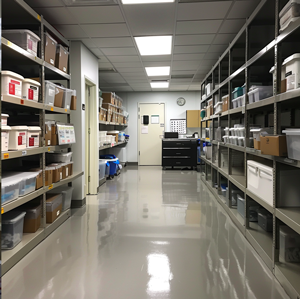Supply Chain Shortages Continue to Compromise Patient Safety
 First listed on ECRI’s Top 10 list of Patient Safety Concerns in 2022, supply chain shortages involving medications, equipment, and healthcare supplies continue to challenge healthcare. A recent survey administered jointly by the Institute for Safe Medication Practices (ISMP) and ECRI found ongoing supply chain issues are leading to unsafe practices and compromised care. How do we mitigate this complex risk?
First listed on ECRI’s Top 10 list of Patient Safety Concerns in 2022, supply chain shortages involving medications, equipment, and healthcare supplies continue to challenge healthcare. A recent survey administered jointly by the Institute for Safe Medication Practices (ISMP) and ECRI found ongoing supply chain issues are leading to unsafe practices and compromised care. How do we mitigate this complex risk?
Supply chain issues remain a high concern, earning it another top spot on ECRI’s Top 10 Patient Safety Concerns of 2024 list (8. Delays in care resulting from drugs, supply, and equipment shortages). A recently published survey overseen by ECRI and ISMP looked to further detail how supply chain shortages harm patients. From the 200 respondents who completed a July 2023 ISMP/ECRI survey on Drug, Supply, and Equipment Shortages, 49% reported delayed patient treatments, 24% shared they were aware of at least one medication error, and hospital-acquired infection rates had increased related to supply chain shortages. Due to the complexity and breadth of the issues, resource-intensive time spent by healthcare professionals to plan, mitigate, and educate is exerting an enormous toll. ISMP has shared the results of the survey with the US Food and Drug Administration (FDA) to help shed light on this continued patient safety issue. You can read more here: Institute for Safe Medication Practices (ISMP) article.
To help mitigate supply chain related patient safety risks, organizations should focus on developing a comprehensive supply chain plan that focuses on planning, preparation, communication, flexibility, and vendor collaboration. Some recommended actions to get started might include:
- Proactively identifying supplies and critical drugs at risk of supply chain issues.
- Monitoring drug shortage and plant disruptions.
- Establishing internal and external communication plans.
- Collaborating with vendors for transparency with inventory levels, surge plans, and supply origins.
- Developing flexible vendor contracts for substitutions.
- Establishing strong quality control protocols, especially with substituted products.
Don’t hesitate to reach out to your Medical Mutual Risk Manager for resources to help get you started!
This article falls under OPERATIONAL in the Enterprise Risk Management (ERM) risk domains.
The business of health care is the delivery of care that is safe, timely, effective, efficient, and patient-centered within diverse populations. Operational risk relates to those risks resulting from inadequate or failed internal processes, or systems that affect business operations. Examples include risk related to: adverse event management, credentialing and staffing, documentation, chain of command, lack of internal controls, supply chain and identification of existing opportunities within management oversight.
